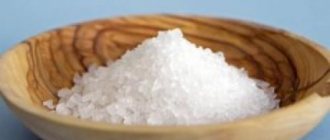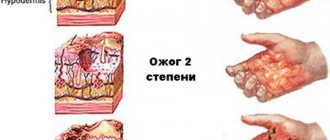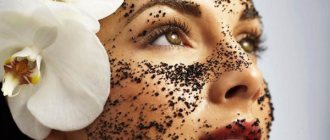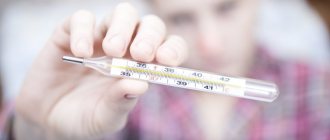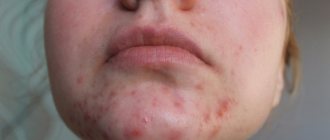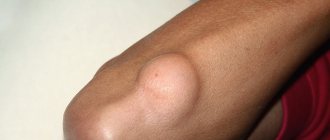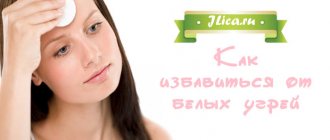Why is it important to properly handle the suture after surgery?
The attending doctor should provide information about further manipulations, but, unfortunately, this does not always happen in modern clinics and hospitals. The patient returns home after long-term therapy and does not know how to properly treat the postoperative suture for better healing. Correct tactics are important for quick and rapid healing. Surgeons focus on home treatment of sutures; they become a common cause of complications.
If redness, swelling forms at the site of the postoperative suture, blood, pus, bile, etc. are released, you should immediately seek help from a doctor, this indicates a complication. It is necessary to carefully monitor the condition of the wound after surgery.
Proper wound treatment is important for the following reasons:
- to avoid serious complications that could lead to repeat surgery;
- to maintain the sterility of the wound to prevent suppuration and infection;
- for a speedy recovery;
- to prevent pain;
- to avoid the inflammatory process.
If a person correctly performs the manipulations to treat the seam, recovery occurs on average after 2 weeks. It all depends on the type of operation, severity, and type of suture.
Seam care in special cases
There are special cases when sutures do not heal as expected. They need careful care. They are not particularly different from the treatment behind conventional postoperative sutures, but still require a little more attention.
Dry scar care
When a postoperative suture begins to form a dry scar, it should never be removed. The dry skin will fall off on its own, or with the help of medicinal and folk remedies. In the shower or bath, you should try not to get the scar wet to avoid bacteria and inflammation. Systematically treat the scar with aseptic means, smear it with creams or gels.
What to do if the seam gets wet
If the seam begins to get wet, it means that inflammation has formed in it. To prevent its development and speed up the recovery process, as well as healing, it is necessary to constantly treat the surface of the seam with aseptic, bactericidal and anti-inflammatory agents.
Apply anesthetic cream to the seam as necessary. After each procedure, apply a sterile bandage. When the seam more or less begins to heal, you can do air baths for no more than 5 minutes.
What to do if the seam festers
If the sutures become suppurated, you should urgently contact a surgeon. He will examine the seam, cut it at the place of suppuration or, if there are threads, unravel them. Next, he will wash the wound, treat it with antimicrobial, anti-inflammatory solutions and apply a sterile bandage lubricated with wound healing cream.
After this, the seam must be carefully monitored and cared for , otherwise the healing process will take a long time.
Long-term non-healing postoperative sutures cause many people to worry about their health. No need to worry. It is enough to be more careful, properly handle and care for the seam, and do everything according to the doctor’s recommendations. After a short time, the seam will heal and stop bothering you.
Take care of yourself and be healthy!
Don't miss the most popular articles in the section:
- Celandine. Useful properties and contraindications for the use of celandine. Recipes with celandine.
- How to quickly and peacefully fall asleep if you are worried about insomnia.
- Orthopedic pillows. Convenience, quality, healthy sleep. How to choose the right orthopedic pillow.
- Colitis of the intestines. Symptoms and treatment in adults.
How does rapid healing occur?
Wound healing occurs differently in each patient, depending on the type of suture and the severity of the surgical intervention performed. You should never leave a wound untreated. Treatment is needed to ensure a quick recovery and the stitch to heal without complications.
Ointments and other medications with antiseptic, anti-inflammatory, and regenerating effects help to quickly get rid of the unpleasant consequences after skin surgery. They are necessary in order to:
- rapid tissue regeneration occurred (recovery, wound closure);
- no inflammatory process occurred due to antibacterial and antiseptic properties;
- improve the quality of newly formed tissue;
- reduce internal intoxication.
Healing occurs in several stages, they are clearly visible during processing manipulations. Firstly, the wound is disinfected, which promotes healing; bacteria cannot prevent the wound from healing. Secondly, the ointments and creams used help speed up regeneration, that is, help the skin recover and improve the quality of the new tissue being formed.
Taken together, all actions lead to the fact that the seam heals soon.
Types of scars and their characteristics
The following types of scars are distinguished:
- Normotrophic are normal scars that are formed if the processes of formation and breakdown of scar tissue are coordinated. In appearance, this is a flat defect on light-colored skin that has normal sensitivity and elasticity;
- Atrophic. The scars resemble depressions, they are not wide and almost do not differ from normotrophic ones. They are formed if little collagen is produced at the incision site, then the process of scar tissue formation prevails over its formation;
- Hypertrophic. These are slightly thickened cords protruding above the skin level. The dimensions of the defect correspond to the previous section. They occur if too much collagen is produced at the site of damage, the excess of which does not have time to be absorbed. Hypertrophic scars are formed if the regeneration process is disrupted (inflammation or stretching of an immature scar). They can smooth out 1 – 1.5 years after surgery, but this does not always happen;
- Keloids. This is the most unfavorable scenario. Such scars protrude above the rest of the skin, have a pink or whitish tint, their consistency is elastic, the surface is uneven and wrinkled.
It is important to determine the type of scar in order to select the most appropriate methods for its correction.
Treatment - how to speed up the healing of postoperative sutures with ointments and other means
At the initial stage, each operated patient should understand the stages of suture treatment in order to understand when it is necessary to perform the necessary actions (apply ointment, clean the wound, etc.).
Seam processing at home is performed as follows:
- carefully remove the bandage from the suture, applied in a medical institution (if the bandage has dried, you should slightly soak it with hydrogen peroxide);
- analyze the condition of the postoperative wound to exclude the appearance of pus, bile, swelling, etc. (if these symptoms occur, you should contact a medical facility);
- if there is a small amount of blood, it should be stopped before manipulation with a bandage;
- First, hydrogen peroxide is applied, you should not skimp on the liquid, it should moisten the wound generously;
- you need to wait until the product stops contacting the seam (stops hissing), then carefully wipe it off with a sterile bandage;
- then, using a cotton swab, the wound along the edges is treated with brilliant green;
- ointments should be applied only after the stitch begins to heal a little, approximately 3-5 days after discharge.
You can speed up the healing of postoperative sutures with the help of special ointments. They are aimed at accelerating tissue regeneration and providing an anti-inflammatory effect. Popular ointments include:
- Contractubex - heals postoperative sutures, applied after approximately 5-7 days from the date of application. The ointment is applied to the problem area 2 times a day, morning and evening, by rubbing until completely absorbed. The average course of therapy is a month.
- Actovegin. The wound heals faster with the help of ointment due to the anti-inflammatory effect. The main advantage of the drug is the virtual absence of an allergic reaction in patients, due to which the drug can be used during pregnancy and lactation. Should only be used on the advice of a specialist. The product comes in different forms in the form of cream, ointment, and gel.
- Vulnuzan is an inexpensive product with anti-inflammatory, antiseptic, and regenerating effects. Can be used during periods of purulent discharge. Apply to the immediate affected area every day until the discharge completely disappears.
- Levomekol is a popular ointment for wounds, abrasions, and cracks. Widely used in postoperative practice. It has antibacterial, anti-inflammatory, wound healing and regenerating properties. Has many positive reviews among doctors and patients. It can also be used during the period of pus discharge and complications. The downside of the product is that it cannot be used during pregnancy and breastfeeding.
In addition to ointments, doctors may recommend the following medications:
- Iodine is an inexpensive and easy-to-use remedy; you can call it an analogue of brilliant green. But it is not recommended to use it frequently, every day; it is worth taking a alternate course with ointments, since the liquid can significantly dry out the skin, which will cause slow regeneration.
- Dimexide is a solution widely used in postoperative practice. With the help of the drug you can not only treat the wound, but also make lotions and compresses.
- Miramistin is suitable as an antiseptic. It can be used instead of hydrogen peroxide. It is believed that due to its antimicrobial properties, the drug is more effective in therapy. Apply throughout treatment to cleanse the wound.
If you follow the doctor's recommendations and the correct sequence in performing the treatment procedure, you can achieve a quick and effective result. Also be sure to read the article on how to get rid of scars after surgery.
Features of a keloid
The formation of keloids is based on a perverted regeneration reaction in response to an incision. Typically, such a defect appears due to reduced general and tissue immunity.
Keloids form in areas with poor blood circulation, as well as in cases of deep surgical intervention. Keloid scars are dense, elastic with an uneven, smooth and shiny surface. They protrude significantly above the skin level. Sometimes they look very similar to warts.
The main feature of keloids is that they are constantly growing (fast or slow).
During their growth, a person feels itching, burning, and pain. Since the development of keloids does not stop, the volume of its outer part can be several times larger than the inner one. Such defects are not capable of independent regression.
Due to the ability of keloids to grow, the means and methods for their removal must be chosen very carefully. It is best to consult a qualified professional.
Possible complications - what to do if the seam becomes inflamed?
complication of a postoperative suture in the photo
First, the patient should understand what inflammation is, how it manifests itself and is recognized, in what situation home therapy should be carried out, and when to seek medical help. The following symptoms may indicate the presence of an inflammatory process in a postoperative suture:
- there is redness and swelling in the wound area;
- the pain syndrome becomes stronger every day;
- During palpation, a compaction is felt; as a rule, it does not have sharp boundaries;
- on days 4-6, fever, chills, and symptoms of intoxication appear;
- the emergence of a specific substrate from the wound, suppuration.
The causes of such complications could be the following factors:
- penetration of infection into the wound;
- improper care or lack of care for the postoperative suture;
- incorrectly installed or inadequate drainage installed after surgery;
- making a surgical error after the operation.
When the first signs of inflammation appear, it is worth carrying out hygienic treatment of the wound every day with hydrogen peroxide, iodine, and brilliant green. Repeated manipulations may be required depending on the condition of the lesion. When there is no pus, redness and swelling are observed, a one-time treatment can be used. In other cases, from 2 to 4 times a day. After treatment, it is recommended to apply a sterile bandage with ointment, which can be used during the inflammatory process.
If the wound does not heal for more than 2 weeks, despite frequent treatment, begins to bleed heavily, or pus appears, you should immediately visit a surgeon. It may be necessary to probe the wound and draw out the exudate (discharge). Also read the article - what is seroma of a postoperative suture.
Ligature fistula of postoperative scar
A fistula is a pathological course that is surrounded by an inflammatory infiltrate. It is usually placed near the non-absorbable thread that was used to close the edges of the surgical wound. This canal is lined inside with epithelium, through which serous-purulent discharge is released.
A ligature fistula appears in response to the body’s rejection of non-absorbable threads to connect the edges of the wound.
Most often, such a reaction is caused by silk, lavsan and nylon threads. Doctors identify several factors that provoke the appearance of a fistula:
- Penetration of pathogenic microorganisms into the seam area;
- Immune rejection of surgical material;
- Accidental piercing of a hollow organ.
The first thing to do when a fistula appears is to visit a doctor. It is important to eliminate the inflammatory reaction.
If you are intolerant to the threads, the specialist will remove the stitches and replace them with hypoallergenic ones. If a ligature fistula of a postoperative scar appears, it is necessary to take a course of antibiotics and anti-inflammatory drugs as part of treatment. A vitamin and mineral complex is also indicated. In addition, it is important to regularly treat the wound with an antiseptic.
General recommendations for operated patients
There are typical instructions that presuppose the norms and rules of patient behavior described for the speedy recovery of a postoperative wound. They should be followed by every patient at home. They consist of the following points, described in the table below.
| Type of load | Rules for caring for postoperative sutures |
| General recommendations | · eat properly, follow the diet prescribed by the doctor; |
| · Use only water and baby soap to wash the wound; | |
| · maintain hygiene of the wounded area, rinse and clean every day; | |
| · do not use ointments, creams, gels, or rubs without consulting a specialist. | |
| Shower | You should only take a shower when the wound begins to heal, becomes dry and gradually heals. The duration of the procedure should not exceed 10 minutes. The water in the bath or shower should not be too hot or cold. |
| Physical exercise | In the first 2-3 months you should adhere to the following recommendations: |
| · do not stand in one place for more than 15 minutes, do only light homework; | |
| Increase the load gradually; | |
| · take daily walks in the fresh air; | |
| · try not to load the area where the seam is located; | |
| · It is worth including daytime sleep in therapy if there are minor loads; | |
| · Perform exercises only with your own weight, avoid lifting weights; | |
| · Only walking is considered acceptable. | |
| Sex | Doctors recommend waiting until complete recovery before starting sexual activity. You should not experiment and take risks when intimacy brings shortness of breath, excessive sweating, and fatigue. This indicates the need to temporarily abstain from sex. |
| After recovery, you should gradually pick up the pace and rhythm in sexual relationships. | |
| Trip abroad | Travel abroad can be carried out after agreement with the attending physician. |
| Diet | After surgery it is recommended: |
| · exclude unhealthy foods (smoked, overly salted, fried, canned); | |
| · plant foods should predominate in the diet; | |
| · take additional vitamins; | |
| · include bran in the menu; | |
| · meat and fish – low-fat varieties. | |
| Emotions | All negative emotions are contraindicated. They will adversely affect the state of the nervous system, which will lead to long-term recovery. |
All recommendations are intended for general use. It must be borne in mind that any wound has its own characteristics, which should be discussed with the attending physician. Proper therapy will help you quickly get rid of unpleasant physical and mental symptoms.
Special dressings
A very convenient way to treat postoperative sutures is to use special ready-made dressings. They are effective in treating the healing of clean and purulent wounds. Depending on the regeneration phase, dressings of different composition are used.
Dressings for the first phase contain antibacterial and adsorbent substances that help cleanse the wound, including necrotic tissue. Dressings for the second and third phases of healing are designed to protect delicate granulations (forming scar), and also contain substances that stimulate regenerative processes.
This method is very convenient for the patient, as it does not require any effort other than changing the bandage daily. The most common dressings are Vaskopran, Algipor, Sorbalgon and others.
One of the important aspects of the postoperative period is proper care of sutures. It will not be a revelation to anyone that it is always easier to prevent than to deal with the consequences. Stitches entail the likelihood of scars and scars, and if you start using something from the rich arsenal of ointments, gels or creams in a timely manner, you can avoid cosmetic defects. Our article will demonstrate the rating of the best ointments for healing sutures after surgery and will help you choose the most optimal option for the required drug in 2020
Necessary materials
First you need to purchase all the necessary materials. This can be done at any pharmacy chain located near your home. If you have difficulty walking, ask your relatives or neighbors to buy everything you need.
Treatment of a postoperative suture requires the presence of ordinary brilliant green, 3% hydrogen peroxide, an alcohol solution and hypertonic fluid. You will also need tweezers, post-operative patches of suitable sizes and cotton swabs.
In some cases, postoperative sutures are treated with cotton wool. When independently caring for damaged tissue, it is better to avoid using this material. When rubbing the skin, small pieces of cotton wool can cling to the applied threads and remain on the wound. As a result, inflammation may occur. That is why you should give preference to sterile bandages or special dressings.
Antiseptic spray for wounds
Antiseptics in the form of aerosols deserve special attention. An antiseptic spray for wounds is more convenient to use, since it does not come into contact with the injured area. Antiseptics in the form of a spray are actively used to treat burn wounds.
Names of the most popular and effective antiseptic sprays:
- Panthenol . The main active substance Dexpanthenol, when applied to the skin, is converted into panthenolic acid, which accelerates tissue regeneration. Panthenol can be applied to abrasions, cracks, burns, including sunburn, as well as to stitches after surgery. The aerosol activates the growth of new cells and promotes rapid healing of the wound.
- Octenisept . The spray is intended for external use for traumatic skin injuries. The list of indications includes the treatment of burns, cuts, diaper rash, trophic ulcers, and bedsores. After surgery, the aerosol is used to treat slow-healing scars. The drug has a wide range of antimicrobial activity, it causes the destruction of cell membranes of gram-positive and gram-negative microorganisms, and is also suitable for the destruction of viral and fungal infections.
- Yoddicerin . This antiseptic with a wide range of activity against various microorganisms has a bactericidal anti-inflammatory and local analgesic effect. In surgical practice, it is used to treat burns, frostbite, purulent wounds, and to prevent purulent inflammation in soft tissues. For large affected areas, tampons, turundas, and gauze bandages are impregnated with the product and injected into the serous cavities of abscesses after removing the purulent contents.
- Hyposol . Spray for local therapy, when sprayed, they form a yellowish-orange foam mass, since the composition includes sea buckthorn oil. The product has a combined effect: acts as a local antiseptic, relieves inflammation, stimulates regeneration. In surgical practice, they are used to treat open, long-term non-healing infected wounds, 1-3 degree burns, and in the postpartum period to treat and prevent cracked nipples and mastitis.
- Brownodin . The product is used for skin injuries of various origins: abrasions, maceration, postoperative, post-traumatic wounds, trophic ulcers, bedsores, burns. The drug can be used for infectious skin lesions of various etiologies, for the treatment of infectious dermatitis, eczema. The medication is used to treat the surface before and after surgery, biopsy, puncture, and also disinfect the skin around drains, probes, and catheters.
